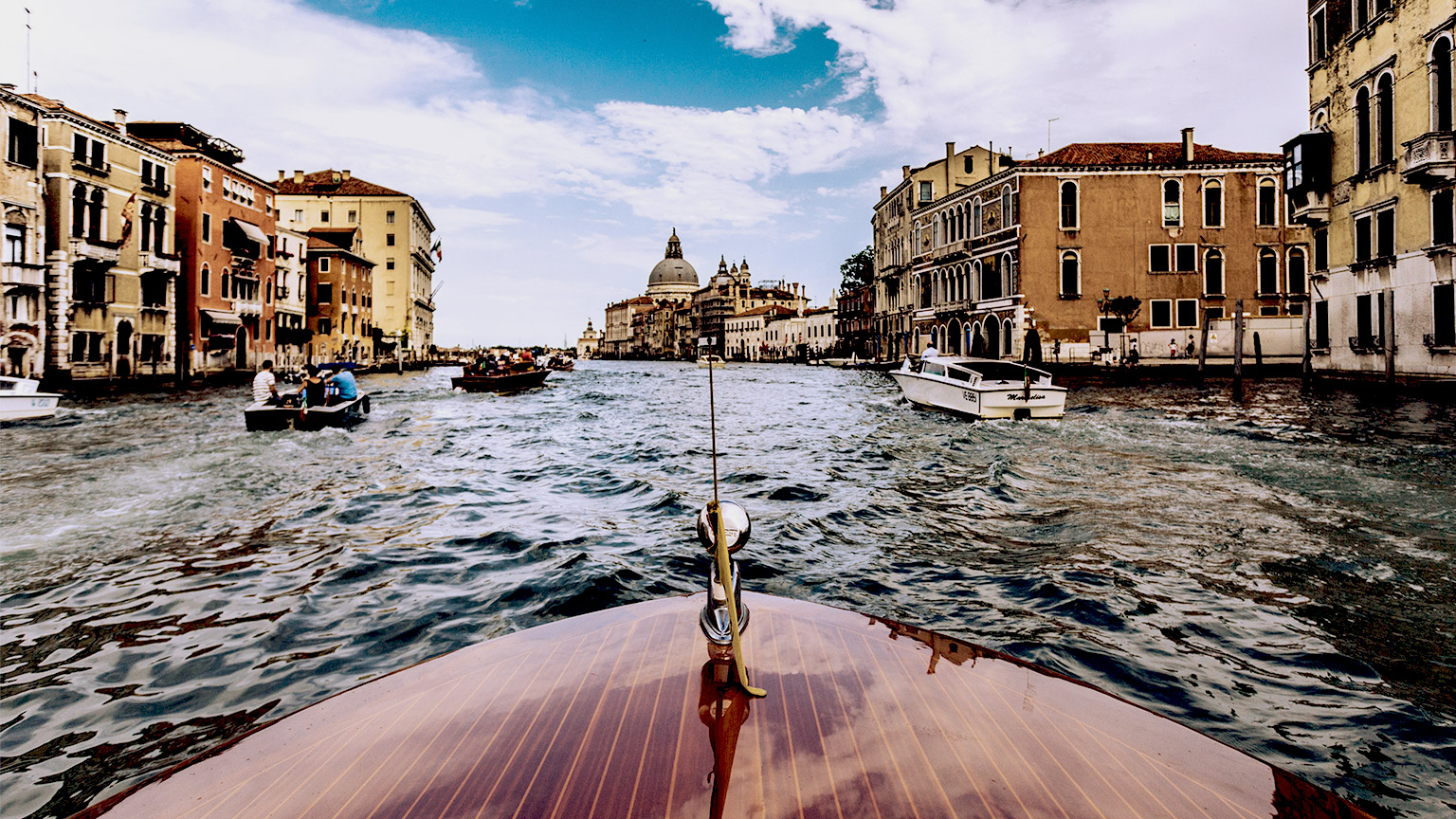The tourism operating environment has features and characteristics that impact global tourism. It is made up of factors and conditions within the external environment, which are constantly changing and generally beyond the control of business management. These external factors can cause direct and indirect impacts on business operations, the workforce and revenue. These can be grouped into key segments:
- Political
- Economic
- Socio-cultural
- Technological
- Environmental
- Legal.
Tourism organisations and the tourism industry in general need to understand and analyse these aspects of the operating environment for many of the following reasons:
- To adapt and maintain its competitiveness.
- To anticipate growth and development needs.
- To anticipate workforce needs and training.
- To manage financial implications.
- To manage risk.
Successful companies and organisations carefully monitor these conditions when strategising – e.g. Tourism New Zealand considers these factors when targeting potential markets.
The PESTEL tool, (also known as PESTLE), is a framework used to analyse and monitor those external factors that have an impact on business – in this case global tourism. Understanding this framework will help you to engage in strategic thinking and anticipate business threats, or how to minimise their impacts.
For example, what political factors might impact worldwide travel? Think about your learnings from the history of tourism through the ages around the world and consider those impacts that encouraged or limited global travel such as wars, political stability, trade/commerce, immigration policies etc.
Watch this video
It describes the PESTEL (PESTLE) analysis in more depth. (3:17)
We have given a few features under each factor of the PESTEL framework to get you started but there are many more. When reading through each one, think about how each factor might affect tourism on a global scale. Maybe spend some time online researching this topic further.
- Political decisions affect the economy
- Political stability (e.g. instability can lead to riots, looting, and general disorder)
- War/unrest
- Political policies influence tourism (e.g. investment in tourism infrastructure)
- Policies and decisions can influence the rate technology is developed and accepted (e.g. processing visas, fast gates at immigration entry points, etc.)
- Corruption levels (can impact tourist decisions to visit a country)
- Immigration/visa policies – open borders (ease of access)
- Tariffs – e.g. taxes on incoming transport, customs, etc.
- Environmental policies – can attract more tourism as the world’s tourist population is now much more aware of their impact.
- Inflation & interest rates
- Taxes
- Exchange rates
- Rising disposable incomes
- Employment
- Population growth and life expectancy
- Education level
- Health consciousness
- More paid holiday time
- Demographics
- Attitudes to career, leisure, and retirement
- Faster and cheaper transport
- Availability of transportation
- Level of innovation/automation
- Techno awareness and acceptance
- Geographical location
- Global warming/climate change
- Weather
- Transportation and tourism pollution
- Overcrowding
- Sustainable/ecotourism
- Resource depletion
- Regulation & deregulation (tourism operators)
- Health & safety law
- Competition regulation
- Tax laws
- Employment laws
- Immigration/visitor requirements
You will hopefully now have a bird’s eye view of the PESTEL concept in terms of the global tourism operating environment. Many international tourism businesses and organisations use the framework to establish goals and strategies.
What is the political situation of a country and how does this affect the tourism industry?
This is probably the least predictable element of the tourism operating environment. Countries have adopted different political regimes to govern their nations and these, as in New Zealand, can be up for re-election every few years. The policies made by the political leadership of a country can affect a whole host of fundamentals which will impact tourism to, and within the region.
Political Stability
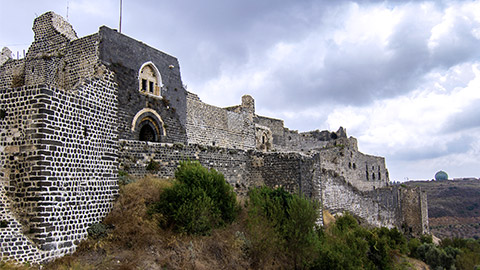
Political stability is a crucial factor in attracting tourists to a region. When a country experiences political instability, such as civil unrest or terrorism, it can have a significant impact on the tourism industry.
According to the World Tourism Organization (UNWTO), tourism flows can decrease by up to 20-30% during a crisis or conflict.World Tourism Organisation(UNWTO)
For example, Syria was once a popular tourist destination, with millions of visitors each year. However, since the civil war began in 2011, the country's tourism industry has been severely impacted. The number of tourists visiting Syria has plummeted, with a 97% decrease in tourist arrivals from 2010 to 2016, according to the UNWTO.
Similarly, political instability in Egypt has had a significant impact on its tourism industry. Following the coup in 2013, the number of tourists visiting Egypt dropped by 95%, causing a loss of over $9 billion in tourism revenue, according to the World Travel and Tourism Council (WTTC).
In contrast, political stability can have a positive impact on tourism. For example, after the end of apartheid in South Africa, the country's tourism industry grew significantly. According to the WTTC, tourism in South Africa grew from 3.8 million arrivals in 1994 to 10.2 million arrivals in 2018, with tourism contributing over 9% to the country's GDP.
Open borders allow travellers to visit destinations freely and easy access is an incentive for tourists to visit. If governments impose sanctions -or visa requirements on travellers, this can become a barrier to tourism. Many visas are easy to obtain online in the form of ETAs (electronic travel authorities) however, some countries are notoriously difficult such as Saudi Arabia, North Korea, Bhutan, Russia, Cuba and Iran.
Taxes and Tax Incentives
Political decisions govern taxes and tax incentives. In many countries, tourists can claim back tax refunds on goods purchased whilst there. Whilst this usually isn’t the only reason a tourist would visit a country; it could be an incentive. General taxes – if the rates are high, this can impact local prices (food, accommodation – the general cost of living) which if too expensive can become a barrier for tourists to visit or can affect the duration of their stay in the country, for example, Switzerland, or Iceland.
Changes in Regulation
Examples of policy changes in regulations that can impact tourism are
- Environmental responsibilities (tourist carbon emissions etc.), can be seen as positive to the more environmentally conscious tourist.
- C)VID-19 requirements and practices (quarantine/vaccination etc.)
Politically Locked Travel Destinations
Image Locations
- Image 1 - Al Ula at Night in Saudi Arabia
- Image 2 - Nasir or Molk Mosque in Iran
- Image 3 - Thimpu Resting Area by the Pool in Bhutan
- Image 4 - Kyszylshin River in Russia
- Image 5 - Vinalles Vallye in Cuba
- Image 6 - Ryongmun Caves North Korea
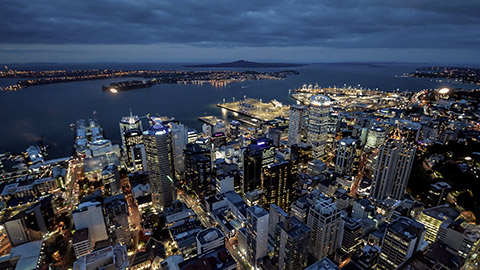
Periodic economic upheavals such as the Great Depression, the Global Financial Crisis and more recent recessions contribute to changes in the travel demand. Travel for pleasure is a discretionary activity and when economic times become difficult, one of the first ways of cutting back on expenditure is to modify travel habits. This may involve changing the duration of travel, the distance travelled or cancelling travel plans altogether in favour of spending money on higher priority needs. Similarly, changes in government policy can affect tourism demand. Changes to tax rates, interest rate policies, and exchange rates all have an effect on the money an individual will have available for discretionary expenditures like travel.
Explore: The 2008–2009 Global Economic Crisis
The contraction of the real economy impacted the tourism market. Faced with possible lay-offs or loan reductions, employees would postpone, change or even cancel travel plans, significantly reducing their travel budgets. Accompanied by a high oil price and rising inflation rates, recession fears took their toll and travel budgets further diminished. This constricted international demand for tourism services in holiday destinations.
International tourist arrivals dropped, affecting not only the economic performance of tourism companies but also tourism-related firms.
The 2008–2009 crisis was the first serious downturn faced by the sector at a global level. The tourism sector experienced important declines and changes in travel habits, such as the decrease in long-haul travel in favour of short-distance travel, including intra-regional and domestic travel.
In 2010, the tourism sector rebounded faster than expected and fully compensated for the losses caused by the economic crisis at the global level, posting a growth rate of international tourist arrivals of 7%. The recovery confirms the sector’s resilience in the medium and long term and its role as a key driver of growth and much-needed employment in a changing economic setting.
How a country’s economy performs directly impacts both its population and their ability to travel both domestically and internationally. It also affects the desirability of tourists to visit that country, for example, if an economy is suffering and under-performing, this could mean that there is less investment in business growth which could be developing tourist infrastructure. The economic impact of the Covid 19 pandemic had a massive impact on the global tourism industry, but a study of the infographic, ‘Travel & Tourism: Economic Impact 2022’ will see the recovery is now well underway.
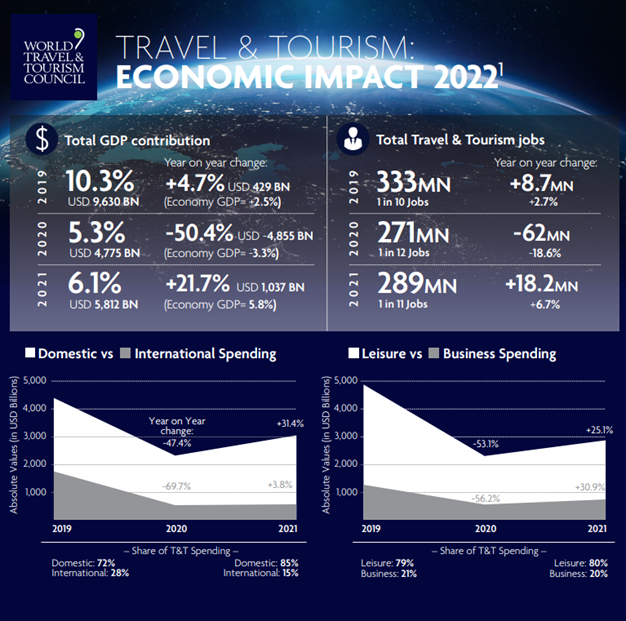
So, what economic factors would have an impact on global tourism?
Tourism is an industry that is highly influenced by economic factors. Economic factors such as rising disposable incomes, employment, and exchange rates can impact the global tourism industry significantly.
Rising Disposable Incomes
Rising disposable incomes play a significant role in the growth of the tourism industry. As disposable incomes increase, people tend to spend more on travel and tourism, which boosts the tourism industry's growth. People tend to opt for international travel and explore new destinations. The rise in disposable incomes is also attributed to the increase in the number of middle-class families who can afford to travel.
For instance, China's economic growth has led to a significant increase in the number of people with disposable incomes. This has resulted in a surge in the number of Chinese tourists travelling abroad, with many opting for destinations such as Australia, Europe, and the United States.
Employment
Employment rates also have a significant impact on the tourism industry. When employment rates are high, people tend to have more disposable income and are more likely to spend on travel and tourism. Conversely, when employment rates are low, people tend to cut back on non-essential expenses, including travel and tourism.
For instance, during the 2008-2009 global financial crisis, the tourism industry was hit hard, with many people losing their jobs and cutting back on travel expenses. This resulted in a significant drop in the number of tourists travelling globally.
Exchange Rates
Exchange rates play a significant role in the tourism industry, especially for international travel. When a country's currency is strong, it becomes expensive for tourists to visit, and they tend to opt for cheaper destinations. Conversely, when a country's currency is weak, it becomes affordable for tourists to visit, leading to an increase in tourism.
For instance, in recent years, the strength of the US dollar has made it difficult for tourists to visit the United States. Many tourists have opted for destinations such as Canada or Mexico, where the currency is weaker, making it more affordable to travel.


Society is perpetually changing and analysing the sociocultural factor’s impact on the tourism environment, requires a more in-depth look at attitudes and lifestyle changes. This element of the tourism operating environment looks at constantly changing factors such as demographics, population analytics and cultural trends.
Socio-cultural factors shape who we are as people and impact the way we think – our opinions, interests and attitudes. They come from the people we share our lives with, our family, friends, neighbours, and work colleagues – even social media. There are a whole host of social media influencers who have huge audiences and can change the way we think or approach different aspects of our lives – especially buying habits. As of January 2022, Facebook was the first social media network to pass the milestone of 1 billion registered accounts. (Statista Research Department, 2022) This many individuals having a constant online presence, sharing their travelling experiences with the need to impress has led to others wanting to travel- when they might otherwise have stayed at home.
Changes in Social Values
Trends are away from “outer-directed” values to those which are “inner-directed” quality experiences and interactions. Outer-directed travel is more concerned with “collecting” countries and being able to impress friends with your list of visited places, but not necessarily experienced. An outer-directed traveller is more likely to seek experiences and facilities that are like those they are used to at home. Inner-directed travellers seek travel experiences that add quality to their lives.
Learning and experiencing something different is very important to inner-directed travellers. People are increasingly concerned with authenticity and sustainable environmental management. They want to meet local people and learn about their daily lives in an authentic setting, rather than watch a staged representation.
Increases in disposable incomes have made tourism accessible to a large majority of the population. As global wealth increased after the Second World War, people could afford to take holidays, and some could afford to take more than one holiday.
Consider now that many families in Western Culture have two income earners rather than one; they have fewer kids and often have a car. All of these factors increase the likelihood of people becoming tourists.
Smaller families: The delay in marriage and reduced family size have led to higher disposal incomes that can be spent on travel.
A look to the future
A strong positive change for the New Zealand tourism industry is the growth being driven by the growing middle class, which is creating new outbound markets, predominantly in Asia. According to Global Demographics, the middle class will grow by 145 million households between now and 2025. A significant volume of these households resides around the Pacific Rim and could be reached by long-haul aircraft to and from New Zealand.
The growth of the middle class in emerging economies around the Pacific Rim presents our greatest opportunity, but over the past ten years, New Zealand has lost its share of long-haul travel. Other countries have been more effective in competing for growth. Rapid change is likely to continue with the ongoing growth of the middle class and technological developments.
Watch this video
It is about how millennials are affecting tourism. (3:03)
Learning Activity: Socio-Cultural Factors
Look at the list of socio-cultural factors below and select six to analyse. Consider how each one could affect global tourism, giving examples. Add your responses to the Forum 'Socio-Cultural Factors'.
For example:
Family size and structure:
In general, single-parent families on average have less income, some even living on the poverty line, and therefore their opportunities for travel and holidays are limited. The same can be said of some large or extended families with a larger number of children where the breadwinner is on average or below average income. These families tend to take shorter holidays domestically and perhaps use budget accommodation (camping or low-cost motels, staying with family or friends). These family situations can also influence the way members of the family view travel – whether it has value as an experience or not.
Comparatively, smaller families, those with just one or two children could have more opportunities to travel. The age of the heads of the family and their stage in the career cycle will also impact their budget and destination choice. Family activities at the destination will impact their choice of where to go.
- Lifestyles
- Leisure time
- Level of education
- Religious beliefs
- Buying habits
- Immigration and emigration rates
- Attitudes towards saving and investing
- Attitudes towards ecological issues and renewable energy
- Attitudes towards work, leisure and retirement
- Population growth rate
- Age and life expectancy rates.
The technological factors that impact the tourism operating environment relate to the development of technology, what’s already in place and available plus the technological awareness that exists within the customer market. Think about the basic machines and computer services used today within the tourism industry from transport to booking platforms and sales tools, mobile apps to automated passport e-gates. The use of technology plays a massive part in the way the industry operates.
Explore
When we started this course, we briefly looked back in history down the tourism track and you will recall we noted that without doubt, the development during the 18th and 19th centuries of mechanised transportation (rail, steamships) brought travel within the grasp of a larger portion of the population.
With the introduction of the motor car in the early 20th century and the development of roading systems, travel over significant distances became an option for individual travellers to places previously not reached by railways. In many cases (including New Zealand) this ultimately led to the decline of the rail industry.
It was not until the mid-20th century, however, and the introduction of commercial airline services that the world truly began to open up to travellers. During the 1950s the introduction of jet airliners capable of carrying more than 100 passengers over long distances revolutionized international travel. Soon after, the introduction of wide-bodied jets like the Boeing 747 brought about lower airfares, longer non-stop services and the accessibility of air travel to large numbers of people who previously couldn’t afford it. Further advances in aircraft design are extending the range of non-stop flights to more than 15,000km and flight durations to more than 16 hours – A380 aircraft.
Technological advancement has also meant that air travel has become safer with advanced radar systems, autopilot, and other onboard systems which help ensure flying is safer than ever.
Air New Zealand’s relaunch of its Boeing 787-9 Dreamliner direct flight from Auckland to New York is evidence of this. The flight duration is between 16-18 hours and can carry around 300 passengers. (Scheduled to start in September 2020).
Case Study: The Boeing 787-9 Dreamliner
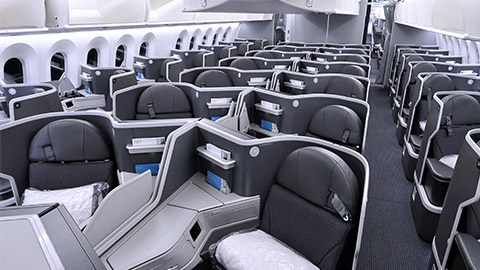
The 787-9 Dreamliner is one of the most fuel-efficient and comfortable aircraft in the skies. Advanced technology enabled this aircraft design to incorporate several new features that have revolutionised air travel for both pilots and passengers alike.
Previously, pilots had to continually flick between scanning altitude, speed and other vital metrics on the flight deck to the actual visual picture outside the window. The 787-9 Dreamliner has incorporated the technology of a Head-Up Display (HUD), used in military aircraft, to enable pilots to do both simultaneously.
The cabin uses fresh air from outside, instead of the conventional method of other aircraft types which uses bleed air taken from the engine operation at the compression stage. This cleaner, fresher air means that passengers (and cabin crew) arrive at the destination less weary. The windows on board the 787-9 Dreamliner are dimmable, therefore is no need for pull-down blinds. This allows passengers to adjust the tint to a desired amount, so can stop sunlight from streaming in whilst enjoying the view, or black it out completely. This allows the window seat passenger to still see out whilst the cabin remains dark.
The aircraft has specially designed surfaces on the wings – laminar flow surfaces. This aerodynamic technology has resulted in a much smoother wing surface that lessens the drag factor. Drag slows the aircraft, requiring more engine power to drive it forward. The less power required for the engines; the less fuel is needed.
Boeing also introduced a gust suppression system by using several sensors around the aircraft to measure air pressure changes -turbulence. The sensors are linked to computers which instantly counteract the forces by controls on the wings and tail. This gust suppression system means that flights feel less bumpy than most other aircraft types. The 787-9 Dreamliner’s use of more electrical systems means there is less use of hydraulics systems which reduces weight, thus increasing fuel efficiency.
Overall, the 787-9 Dreamliner is better for the environment, using 20% less fuel than similar aircraft.
Currently, 54 airlines operate the 787-9 Dreamliner.
Watch this video
Take a tour of Air New Zealand’s Dreamliner. (2:53)
Many separate technological factors impact the tourism operating environment:
- Automation (this section has been done for you - see below)
- Faster and cheaper transport
- Internet connectivity
- Security
- Mobile Communication
- Technological awareness.
Automation: ranges from and is not limited to:
- Data analysis
- Booking sites
- Robotic bartenders (Watch this video here)
- Automated minibar fridges in hotels
- Scanned luggage tags
- Automated back-off systems and reservation systems e-ticketing/centralised information systems
- Eftpos and easy online payments/payWave/automated pricing systems for online sales/self-service check-in kiosks Artificial intelligence: chatbots/facial recognition
- Passport e-gates/ and voice-activated systems:e.g. Smartphones and PCs and Alexa for Hospitality- used in hotel rooms.
Overall automation has made processes easier and quicker for travellers.
Here are some great links for you to explore at your leisure:
Automation in the Hospitality Industry
Intelligent Automation is Changing Tourism Destinations
Learning Activity: Technological Factors
In the Forum, 'Technological Factors' choose three (3) factors and discuss what they mean. Include any example types of the technical process or applications they would incorporate.
This segment of the PESTEL analysis is particularly important for industries to focus on, especially the tourism industry, and refers to physical circumstances. These would typically include variables such as:
- Geographical location
- Climate
- Climate change
- Weather events/ natural disasters Pollution
- Overcrowding
- Sustainable/ecotourism
- Resource depletion and availability of non-renewable goods.
For example, the availability and supply of oil impact the price of fuel, and this ultimately has a knock-on effect in almost every area of the tourism industry. Transportation is the first to be impacted by increased prices, which ultimately will affect passenger and visitor numbers to different destinations. As transportation costs increase, travellers may choose closer destinations or choose not to travel at all.
Case Study: Where Water Stress Will be Highest by 2040
Read the article below written in March 2022 by data journalist Martin Armstrong.

March 22 marks the UN's World Water Day, which "celebrates water and raises awareness of the 2 billion people currently living without access to safe water".
According to the UN: "When a territory withdraws 25 per cent or more of its renewable freshwater resources it is said to be ‘water-stressed’." Globally in 2018, just 18.4 per cent of total renewable freshwater resources were being withdrawn. Regionally though, there are already places experiencing serious issues. Northern Africa has critical water stress levels, while Central and Southern Asia were classed as having high water stress. On the other end of the scale, 31 per cent of the global population remained at the “no stress” level.
As projections from the World Resources Institute for 2040 show though, the problem is only due to becoming more widespread. Reporting by the Economist Intelligence Unit states: "Quickening urbanisation, population growth, climate change and economic development are placing pressure on water systems".
According to the outlook, 44 countries face either “extremely high” or “high” water stress levels by 2040. As warned in the Economist's report: "At the same time, rising sea levels place a growing number of geographies, particularly in East and South-east Asia, at a higher risk of flooding, which can overwhelm sanitation systems and pollute drinkable water sources".
Attitudes towards environmental sustainability have changed dramatically over the past few decades and the tourism market’s demands and concerns need to be acknowledged and acted upon. Environmental factors include global warming and climate change, transportation pollution and resource depletion. Changing climate patterns can result in devastating weather events that impact global tourism. Tourism areas affected by adverse or devastating weather events sometimes are unable to service tourist needs and see a loss in visitor numbers and ultimately revenue.
Travellers and tourism operators alike increasingly seek out sustainable options and are aware of resource depletion, overcrowding and the impacts of tourism pollution.
Unfortunately, environmental factors of the tourism industry are almost always impacted negatively by tourism on both local and global scales. The industry must tackle these issues if it wishes to see continued growth.
Learning Activity: Environmental Factors
In the Forum 'Environmental Factors' discuss how you think this forecast could impact tourism.
Learning Activity: Environmental Factors Youtube
Seek out a YouTube clip, (no longer than 20 minutes in duration) that reflects one area of an environmental factor that impacts tourism and share it in the Forum 'Environmental Factors YouTube'.
You will need to share the reasons why you chose the clip, and which points it covers.
Environmental Disasters
Trigger Warning
The final part of this sub-topic may include content that deals with sensitive and emotionally challenging topics. This may include traumatic events and may evoke strong emotions, memories, or reactions in some learners. It is important to prioritise your self-care and seek support as needed. If you feel uncomfortable or overwhelmed, please do not hesitate to reach out to your trainer, student services or a mental health professional for support.
Environmental factors can have an enormous effect on the growth of tourism worldwide due to their scale. Environmental factors can include natural disasters, extreme weather, environmental disasters, and more. All of these would have had an impact on world tourism. Other than the examples below, can you think of any recent events in New Zealand?
- Thailand oil spill (2022)
- Boxing Day Tsunami in Southeast Asia
- Australian flooding
- Tonga tsunami/earthquake
- Haiti earthquake
- Iceland volcano eruption
- Hurricane Katrina
- California fires
- Christchurch earthquake
- Kaikoura earthquake
- Nepal earthquake.
Watch this video
It is a trailer for the 2012 film, The Impossible. A true story it depicts a family caught in the Boxing Day Tsunami. (6:31)
Environmental effects can be twofold. Firstly, the devastation of the event can render tourism infrastructure inoperable, unsafe or even ruined. However, what can also happen is that not only are the physical structures destroyed but so are the perceptions of the destination.
The media coverage of the disaster/event can lead potential visitors to believe that the entire region or country is no longer fit to visit or worth visiting. This decreases demand reflected by declines in later visitor numbers.
In the worst cases, such as that of Japan after their tsunami, there is simply so much physical devastation that the country is too busy trying to recover and provide for its people.
Reflection
Accommodating tourists, rebuilding hotels, and renovating attractions simply isn't high on the to-do list when other items of higher priority have to be done first – at least that's what most of us think, but is it true?
When a country is dependent on billions of dollars made from tourism, can it afford to ignore, or put off re-investing in tourism infrastructure to encourage those tourists to return?
How can it go about rebuilding its reputation and changing the negative perception that the world now may hold about the region?
Legal factors affect the way customers behave and how businesses operate. These are often categorised together with political factors as they can overlap and be similar – or the same. Countries, and in some cases states, have different rules and regulations and these will always impact the operating environment. Companies and businesses that operate across several countries and regions must pay particular attention to legal factors – this relates to many tourism business operations.
Types of legal factors include, but is not limited to:
- Employment laws
- Health & Safety laws
- Civil rights laws (discrimination)
- Intellectual property/copyright laws
- Competition regulations
- Consumer protection
- Tax laws
- Regulation & deregulation
- Immigration/visitor requirements
- Environmental laws.
The tourism industry is impacted by various legal factors that influence its operations and profitability. Employment laws, such as minimum wage regulations and anti-discrimination laws, ensure the welfare of employees and maintain a positive reputation for businesses. Health and safety laws play a vital role in the tourism industry by ensuring the safety of visitors and employees. Regulations related to civil rights laws protect individuals from discrimination based on race, gender, religion, and sexual orientation.
Intellectual property and copyright laws protect the creative works of individuals and businesses, including photographs and videos used to promote tourism. Competition regulations aim to prevent anti-competitive practices, while consumer protection laws are designed to protect the interests of tourists. Tax laws can impact the tourism industry through the amount of taxes paid by tourism businesses and tax incentives offered to these businesses.
Regulation and deregulation also impact the tourism industry by affecting the ease of doing business and the competitiveness of tourism businesses. Immigration and visitor requirements impact the tourism industry by affecting the ease of travel and the number of visitors to a destination. Environmental laws are also critical to the tourism industry as they can have a significant impact on the environment, and businesses must comply with these laws to protect natural resources and maintain a positive reputation.
Case Study: Uber and Competition Regulations
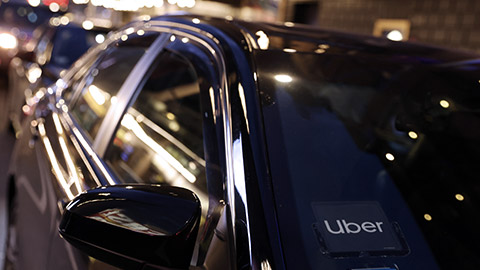
Uber, the popular ride-hailing service, has faced numerous legal challenges globally due to regulatory concerns related to competition regulations. Uber's business model of offering lower-priced transportation services has disrupted the traditional taxi industry and led to complaints from taxi drivers and companies. Many governments have sought to regulate Uber to ensure that it complies with local competition regulations and protects the interests of consumers and taxi drivers.
For example, in 2014, Uber faced a legal challenge in Belgium from a group representing traditional taxi drivers. The group argued that Uber did not comply with the country's taxi regulations, which included requirements for a specific license, vehicle markings, and insurance. The Brussels Court of First Instance eventually banned UberPOP, the company's low-cost ride-sharing service, and ordered the company to pay €10,000 ($11,840) for every violation of the ban.
Similarly, in 2017, London's transport regulator, Transport for London (TfL), stripped Uber of its license to operate in the city, citing concerns over passenger safety and the company's approach to reporting serious criminal offences. TfL argued that Uber had failed to comply with local regulations and therefore posed a threat to public safety. Uber appealed the decision, and the case went to court, where it was eventually resolved in Uber's favour.
These legal challenges have impacted Uber's operations in various regions, with some countries banning the company altogether, while others have implemented regulations to ensure that Uber complies with local competition laws.
Sources:
- BBC News. (2017, September 22). Uber: London stripped of its license to operate.
- BBC News. (2015, April 22). Uber Brussels service banned.
- Krueger, A. B., & Ashenfelter, O. (2018). The ride-hailing industry and transportation policy. Journal of Economic Perspectives, 32(2), 3-26.

Definition: Globalisation: ‘The process by which businesses or other organizations develop international influence or start operating on an international scale’Oxford Languages
Put simply, globalisation can be described as the movement of goods, ideas, values and people around the world. Tourism companies and businesses have evolved through advancements in transport and communication technology to impact heavily on globalisation. Ease of travel has assisted global commerce and created a desire and demand for leisure and recreational tourism products across all areas of the industry. New routes and areas of the world are constantly becoming more accessible, and globalisation makes it easier for travellers to visit. For example, an international banking system enables travellers access to money in most places in the world and allows multinational corporations to pay local suppliers for their goods and services.
We will now look at some tourism companies and attractions that have global appeal and that service the industry at an international level.
Definition of a company:
A voluntary association formed and organised to carry on a business.
There are two types of companies: private and public.
- Private companies have their shares owned within a private group, like a family for example, so they can retain control.
- Public companies have their shares publicly listed on the stock exchange so they’re available to be bought by the general public and other companies.
International Tourism Companies
So, we have been introduced to our case study, tourism business operators. We shall continue to explore them more, later in the component.
Watch the following videos:
Legoland (5:12)
Expedia (2:32)
Louvre (1:44)
Emirates (11:59)
Carnival Corporation (5:14)
Marriot (15:10)
Learning Activity: Tourism Operators
Identify the following tourism operators using the images that follow and write down what you know of them in the Forum, 'Tourism Operators'.
So, we have now been introduced to our case study tourism business operators. We shall continue to explore them more later in the component.
Complete the following ten multi-choice questions to ensure you have understood this topic before moving on to the next.
